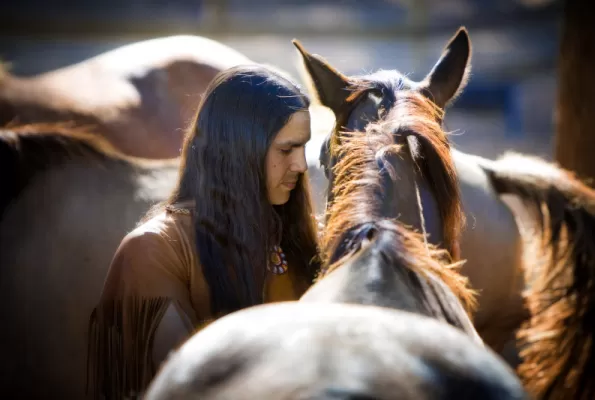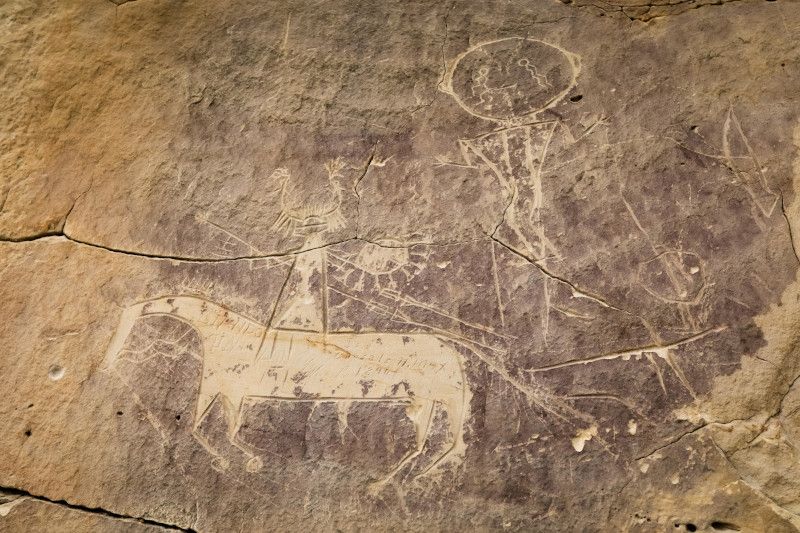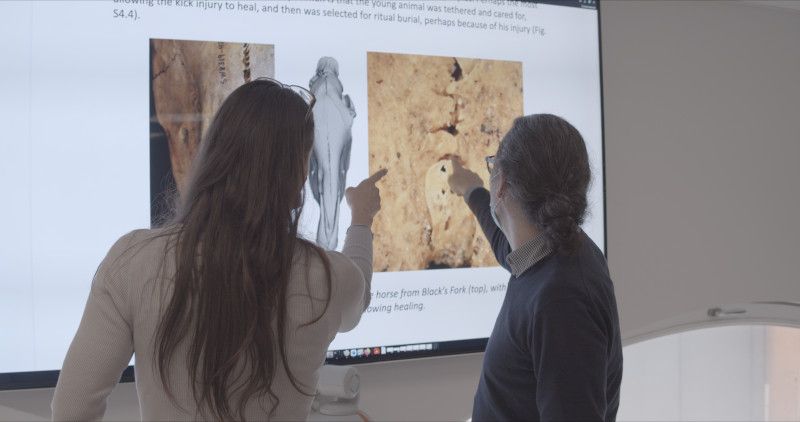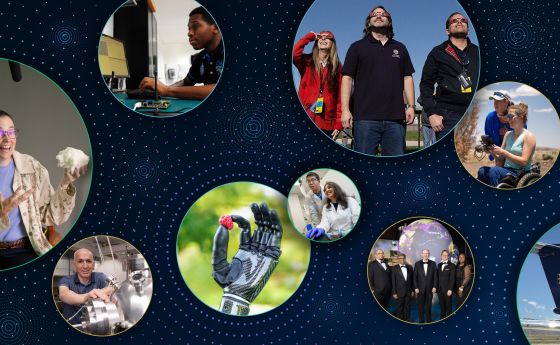
Horses part of Indigenous cultures longer than Western historians thought
An international study found that horses were introduced into Indigenous cultures in the American Great Plains and Rocky Mountains decades before European-American records indicate.
An international study, funded in part by the U.S. National Science Foundation, found that horses have been present on the Great Plains of North America since as early as the 16th century. The study included researchers from the University of Colorado Boulder, the Lakota Nation, Comanche Nation and Pawnee Nation, as well as researchers from schools across 15 countries, spanning over five continents.
Horses became a large part of many Indigenous cultures, but the understanding of their integration and spread has largely been reliant on observations from 18th and 19th century Europeans and American settlers.
Horses and their relatives originally evolved in North America, before travelling across the Bering Strait into Asia and further west. While North American horses were still present as late as 5000-6000 years ago, they had likely died out before Vikings arrived on American shores around the end of 10th century. It is unclear whether the Vikings ever brought horses to America; however, the animals were brought on boats by the Spanish in the 15th and 16th centuries, followed by the British and French and others. Most of the horse remains that were genetically tested by contemporary researchers showed to be primarily of Spanish or Iberian heritage, which coincides with the types of horses the Spanish brought to the Americas. Later, British horses began contributing to the genes of horses on the Great Plains.
It has been assumed, from European sources, that horses first began to spread into the American Southwest after the Pueblo Revolt in 1680. However, the interdisciplinary analysis of the archaeological remains of horses from this study suggests that Indigenous peoples had already begun integrating horses into their cultures decades prior.
"We discovered that across much of horse country of the Western United States, there is scientific evidence that horses were integrated into Indigenous societies long before the first arrival of European colonists or settlers, and therefore, that relationship would have been documented in the historic records coming out of that context," explained lead author William Taylor to NSF's Science Now. "Our results show that from as far away as Idaho through places like Wyoming, Kansas, down into New Mexico, that by at least the turn of the 17th century or the early 1600s, that domestic horses were already being deeply integrated into Indigenous societies." Taylor is also a CU Boulder assistant professor of anthropology and the curator of archeology at the university's Museum of Natural History.
Horse remains found at sites such as Paa-ko Pueblo in New Mexico and American Falls Reservoir in Idaho show that horses migrated from the Southwest to as far north as Idaho in the first half of the 17th century. Another set of horse bones from Blacks Fork in Wyoming showed evidence that the horses were kept in captivity or used in transportation and were found in a ceremonial setting. "Our analysis shows [the horse from Blacks Fork] was born and raised locally. It was cared for, and when the animal passed, there was an extraordinary significance to that event," Taylor said. All of this occurred before Europeans began to explore the western part of the country.
It is possible that the horses were acquired from the outer regions of the Spanish settlements and moved through ancient, Indigenous trade routes throughout the Great Plains and the Rocky Mountain region. Another possibility is that when the Pueblo people moved from Spanish New Mexico toward what is now Kansas, they brought domesticated horses with them.
Some historians have assumed that the Comanches travelled from Wyoming to the southern Great Plains (i.e., Colorado, New Mexico, Oklahoma and Texas) before the 18th century to acquire horses. However, the findings support the Comanche and Shoshone oral accounts that horses were already integrated into their lives before they moved south.
Together, the findings of the paper show that the relationship between Indigenous communities and the horses brought to the Americas by Europeans began decades before Western scientists previously thought. "All this information has come together to tell a bigger, broader, deeper story — a story that Natives have always been aware of but has never been acknowledged," said Jimmy Arterberry, a co-author of the study and tribal historian of the Comanche Nation in Oklahoma.
To hear more about this finding, check out the Science Now video below!







